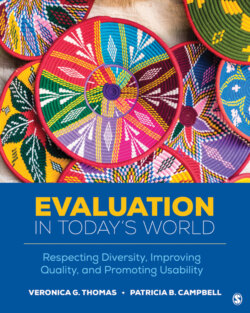Читать книгу Evaluation in Today’s World - Veronica G. Thomas - Страница 139
На сайте Литреса книга снята с продажи.
Journal of Negro Education and Founding Editor Charles H. Thompson
ОглавлениеThe launching of the Journal of Negro Education in 1932 was quite significant, and it included important scholarship that was influential and social justice oriented but essentially ignored in the documented evaluation work of the early 20th century. Charles H. Thompson founded the Journal of Negro Education as a vehicle for documenting the persistent and substantial problems facing African Americans in this country.
Courtesy of the Moorland-Spingarn Research Center, Howard University Archives Howard University, Washington DC.
Thompson was the first African American to receive a PhD in educational psychology (in 1925) from the University of Chicago. He joined the faculty at Howard University in 1926 and remained there for the next 40 years in continuous service to the university until his retirement in 1966.
After founding the Journal of Negro Education in 1932, Thompson served as its editor-in-chief for 30 years. His passion for policy research and his recognition of its significance in opposing segregation undoubtedly fueled his desire to launch the journal as a means of fully documenting the conditions of “Negro” schools and exploring the implications of segregation. Thompson authored well over 100 scholarly publications and editorials. He served as an expert educational witness in many of the major desegregation cases in the field of higher education argued before the U.S. Supreme Court including the 1950 Sweatt case in Texas and the 1948 Sipuel case and 1950 McLaurin case in Oklahoma. Further, Thompson was a consultant in developing the legal strategies that led to the 1954 Brown v. Board of Education decision.
At the time of the Journal of Negro Education’s inception, there was no publication that systematically or comprehensively addressed the enormous problems that characterized the education of Blacks in the United States and elsewhere. Mainstream educational journals (e.g., the Journal of Educational Research) rarely published articles during the 1930s by African American scholars or studies pertaining to Black education. So, the Journal of Negro Education was a response to the urgent and critical need for a scholarly journal that would identify and define the problems, provide a forum for analysis and solutions, and serve as a vehicle for sharing statistics and research on a national basis.
During the 1930s and several decades thereafter, the Journal of Negro Education was a primary vehicle for scholars and legal advocates to voice their opposition to segregation and oppression. These included, for example, writings of W. E. B. Du Bois (sociologist, historian, civil rights activist); E. Franklin Frazier (sociologist, author); James Weldon Johnson (poet, novelist, civil rights leader); Alain Locke (philosopher, writer, first African American Rhodes Scholar); Ralph Bunche (scientist, academic); Mamie and Kenneth Clark (psychologists, researchers); and Kelly Miller (mathematician, sociologist, newspaper columnist).
Important research and evaluation work by African American scholars and legal advocates and/or about African Americans that remains largely unread by the white scholarly community found an outlet in the Journal of Negro Education. In its very first issue, an evaluation study was published by Mary Crowley (1932), “Cincinnati’s Experiment in Negro Education: A Comparative Study of the Segregated and Mixed School.” This early study, conducted in 1929–1930, included a methodology using four mixed schools and two segregated schools with groups equated by grade, age, mental age, and intelligence quotient obtained in Binet intelligence tests. At the end of the article, the author poses interesting contextual questions for further consideration including, for example, (a) What are the differences between the curricula and extracurricular activities of “Negro” pupils in segregated and mixed schools? (b) What are the differences between the two types of schools with respect to their interest in community affairs, their cooperation with community leaders, and their influence on the social, moral, and political life of their communities? and (c) What are the cultural influences of the two types of schools (i.e., their influence on the art and the refinement of living)?
See the following feature for examples of evaluation-related publications in the Journal of Negro Education prior to the 1954 Brown v. Board of Education decision. Readers are encouraged to reflect on and discuss the activity at the end of the listing.
